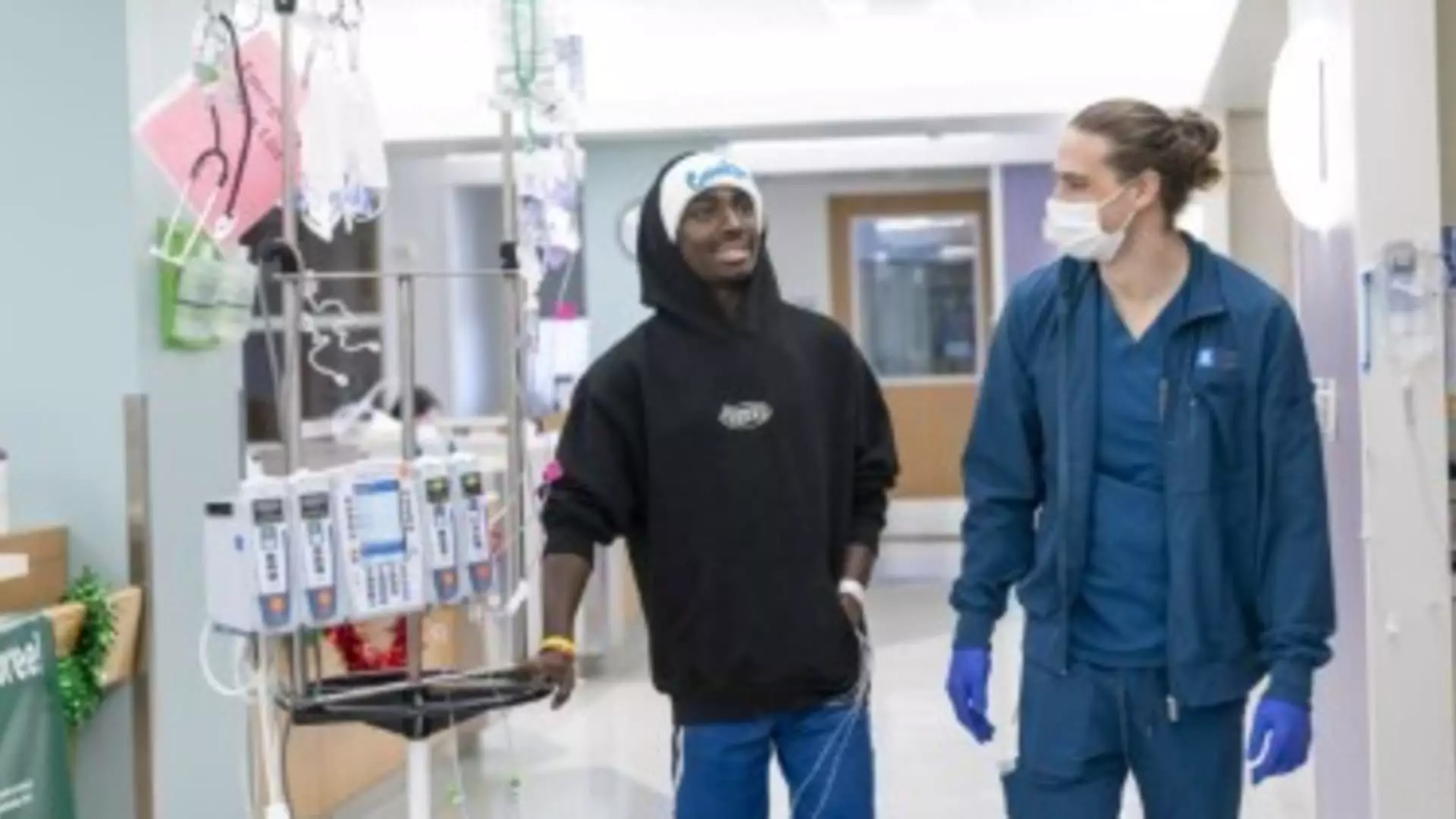Sickle cell disease (SCD) is a hereditary blood disorder that primarily affects hemoglobin, the protein responsible for transporting oxygen in red blood cells. Individuals with this condition see their red blood cells form a sickle or crescent shape instead of maintaining the typical disc shape. This abnormality leads to various complications, including painful crises, increased risk of infections, and potential organ damage. The disease disproportionately affects individuals of African descent, leading to significant disparities in health outcomes.
For many afflicted by SCD, living a “normal” life is often filled with challenges, frequent hospital visits, and constant pain management. Adolescents and young adults, like 19-year-old Deshawn “DJ” Chow, exemplify the struggle facing many patients. DJ’s experience with the disease has been debilitating, often forcing him to miss school and confront periods of immense discomfort, predominantly in his head and lower back.
Recent advancements in gene therapy have brought a glimmer of hope to patients battling this relentless disease. In particular, therapies such as Casgevy, developed by Vertex Pharmaceuticals, have received FDA approval and represent a potential turning point in treatment protocols for SCD. DJ Chow is among the first patients to receive such groundbreaking therapy, a process that necessitated multiple hospital visits and substantial costs, including those related to chemotherapy and other treatments.
The financial implications of these novel therapies cannot be ignored. The high price tag of over $2 million per patient raises critical questions about accessibility and insurance coverage. Fortunately, DJ’s adopted family experienced relatively smooth insurance approval for the treatment, showcasing the importance of effective health coverage in providing access to potentially life-saving interventions. DJ’s father, Sean Chow, expressed immense gratitude for the support they received, emphasizing how pivotal this assistance is for families like theirs fighting against SCD.
Despite the enthusiasm surrounding these therapies, the initial uptake has been less than promising. Within a year of FDA approval, only about 100 patients had begun treatment—a stark contrast to the immense number of individuals living with SCD in the United States. With many young patients being ideal candidates for treatment as their organs remain unaffected by the disease, the healthcare community grapples with the logistical challenges of scaling this innovative treatment.
Experts like Jennifer Cameron from Children’s National Hospital illustrate the complexities of obtaining insurance coverage for emerging therapies. Initially, there was a steep learning curve for treatment centers in navigating insurance requirements and billing codes. However, the overall experience has improved, setting a foundation for smoother processes moving forward. Nonetheless, the crucial issue remains: how to manage the exorbitant costs associated with gene therapies effectively.
The healthcare landscape is seeing exploration into innovative payment models aimed at accommodating the costs associated with new therapies. Traditional plans may struggle to integrate these high-cost treatments effectively, prompting the need for collaborative, statewide approaches to risk pooling and cost-sharing among various insurers and Medicaid programs.
While the Biden administration has introduced a Cell and Gene Therapy payment model to support states with an outcome-driven pricing structure, the financial demand on state Medicaid programs remains enormous. Sickle cell patients constitute a significant portion of Medicaid recipients, especially in Southern states, underlining the pressing need for sustainable funding solutions.
Moreover, the financial burden of treatment is compounded by broader trends in federal spending. As government agencies seek budget reductions, including staffing cuts at health agencies, the survival of supportive programs targeting conditions like SCD hangs in the balance. This scenario urges both public and private sectors to rally for financial strategies that ensure ongoing funding for high-cost therapies.
DJ Chow’s story exemplifies the transformational impact that accessible healthcare and innovative treatments can have. Following his gene therapy, he is beginning to envision a future filled with opportunities he once thought unattainable—like learning to snowboard and surf—activities that were overshadowed by the limitations of his illness. His narrative sheds light on the broader implications of gene therapy; if they can gain traction and become established as standard treatment, they could ultimately change the lives of countless individuals struggling with sickle cell disease.
The future of sickle cell treatment hinges on not just scientific advancements but also on addressing essential systemic barriers such as affordability and accessibility. As stakeholders in healthcare work toward solutions that dismantle these barriers, families like DJ’s will hopefully realize the promise of a brighter, less painful future. Through ongoing research, advocacy, and innovative funding models, the potential to reshape the landscape of sickle cell disease treatment becomes increasingly more achievable, embodying the hope for many affected by this debilitating condition.


Leave a Reply